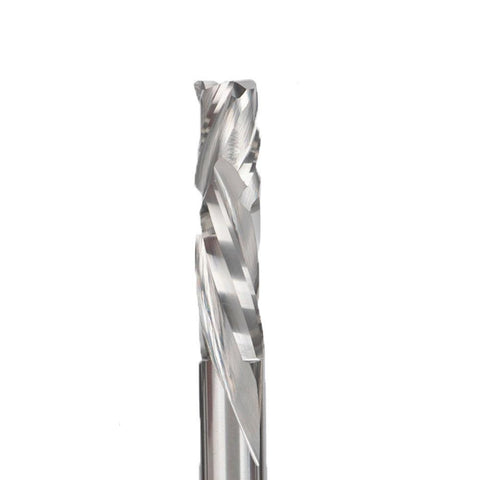Mastering Precision: The Art and Science of Using Spiral Downcut Router Bits with Bearings
In the world of woodworking and metalworking, achieving precision and smooth finishes is paramount. One tool that has revolutionized the way craftsmen approach intricate projects is the spiral downcut router bit with a bearing. This tool is celebrated for its ability to deliver clean, professional results with minimal effort, making it a favorite among both amateur woodworkers and seasoned professionals alike.
The spiral downcut router bit is distinct for its helical cutting edge that spirals downward. This design is particularly effective in preventing the material from splintering or chipping, which is a common issue with other types of router bits. Unlike standard straight bits, which can push the material upward, the downcut bit forces the cut material downward. This characteristic makes it ideal for applications where the top surface of the workpiece needs to remain pristine, such as when creating detailed inlays or cutting veneered panels.
Equally important in the functionality of this router bit is the integrated bearing. The bearing serves as a guide that ensures precise control over the bit's path. This feature is crucial when performing edge work or when following templates, as it helps maintain consistent depth and alignment. The combination of the spiral downcut design and the bearing offers a high level of accuracy, which is essential for intricate tasks that require exact measurements and fine finishes.
Using a spiral downcut router bit with a bearing involves a blend of technique and understanding of the tool's capabilities. One of the first considerations is the material being worked on. While these router bits excel in cutting wood, their performance in other materials, such as plastics or soft metals, can vary. For woodworkers, selecting the appropriate bit size and speed is critical to achieving the best results. Larger bits may be more suitable for deep cuts, while smaller bits are ideal for precision work. Additionally, adjusting the router speed based on the material and bit size helps to prevent overheating and ensures a cleaner cut.
The bearing on the router bit also plays a pivotal role in ensuring the desired outcome. It is crucial to ensure that the bearing is properly maintained and lubricated to avoid any irregularities in the cut. Regular inspection of the bearing for wear and tear can prevent potential issues during use, such as wobbling or uneven cuts. By keeping the bearing in optimal condition, users can rely on the router bit to deliver consistent, high-quality results.
In practice, the spiral downcut router bit with bearing is used in a variety of woodworking projects. For instance, when crafting intricate patterns or designs, the bearing-guided bit allows for precise control over the depth and path of the cut. This is especially beneficial in applications such as inlay work, where exacting standards are required to achieve a seamless fit between different materials. The downcut design ensures that the top surface of the workpiece remains smooth and free from splintering, enhancing the overall appearance of the finished project.
Another common use of the spiral downcut router bit is in edge profiling. When working with veneers or laminated surfaces, achieving a smooth edge is crucial to maintaining the aesthetic quality of the work. The bearing-guided bit helps to follow the edge contours accurately, ensuring that the profile is consistent and even throughout. This technique is particularly useful in cabinetry and furniture making, where the visual appeal of the edges can significantly impact the final product's quality.
In addition to its primary functions, the spiral downcut router bit with bearing also offers versatility in other applications. For instance, it can be employed in template routing, where the bearing follows a template to create accurate shapes and designs. This feature is valuable in both custom woodworking and production environments, where speed and precision are essential. The ability to switch between different templates or adjust the depth of the cut allows for a wide range of creative possibilities.
Ultimately, the success of using a spiral downcut router bit with a bearing depends on the user's familiarity with the tool and its proper maintenance. Regular cleaning and lubrication of the bearing, along with careful selection of the bit size and router speed, are key practices that contribute to achieving optimal results. By mastering these techniques and understanding the nuances of the tool, craftsmen can unlock the full potential of the spiral downcut router bit and elevate their woodworking projects to new levels of precision and professionalism.
In summary, the spiral downcut router bit with bearing is a remarkable tool that combines cutting-edge technology with traditional craftsmanship. Its unique design allows for clean, precise cuts while minimizing material splintering, making it an indispensable asset in the workshop. Whether you're a hobbyist or a professional, understanding how to effectively use and maintain this tool will ensure that your projects achieve the high standards of quality and accuracy that define exceptional woodworking.
